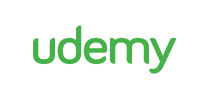1. Introduction
2. Overview of AWS VPC and Security Groups
3.1 AWS Signup Page.html
3.2 Create and Activate AWS Account.html
3. Create an AWS Account
4. What does the cost billing look like for this development test deployment
5. Create an AWS Security Group for App
6. Create AWS ElastiCache Instance - replaces todo-redis
7. Create AWS RDS Database Instance - replaces todo-postgres
8. Download PgAdmin and set up Todo table
9. Create AWS Elasticsearch Instance - replaces todo-elastic
10. Create App Environment in AWS Elastic Beanstalk
11. Create AWS PEM File and access Elastic Beanstalk EC2 instance
12. Source code for Elastic Beanstalk Deployment Description (Dockerrun.aws.json).html
13. Create Elastic Beanstalk Deployment file (Dockerrun.aws.json)
14.1 Task Definition Parameters (stuff for dockerrun.aws.json).html
14. Documentation for Dockerrun.aws.json
15. Configure Environment Properties in Elastic Beanstalk Console
16. Source code for Travis CI (.travis.yml) deployment section.html
17. Configure Travis CI (.travis.yml) to Deploy to Elastic Beanstalk
18. Commit Changes and Watch Deployment
19. Troubleshooting Deployments to Elastic Beanstalk
20. Clean up AWS Services
